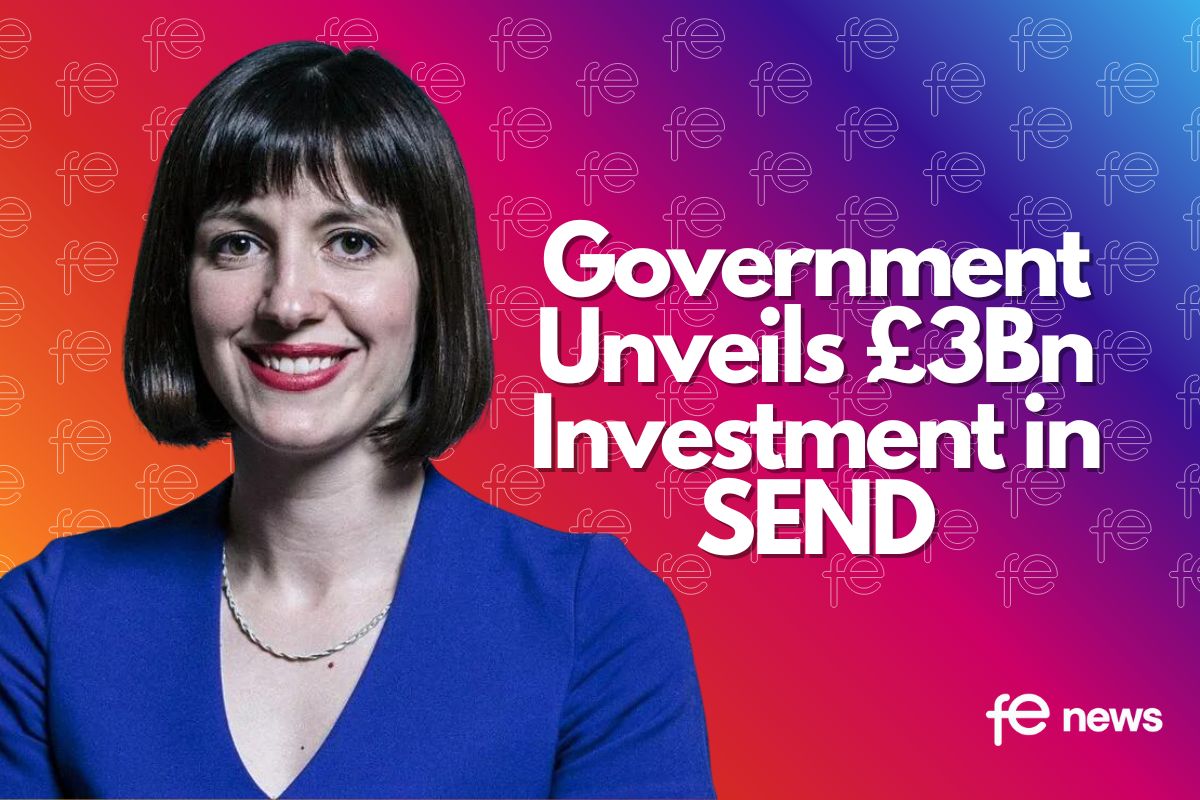Pay rise of 6.5% unlikely to solve teacher supply problems on its own, particularly in STEM subjects

New NFER analysis reveals that a teacher pay increase of 6.5 per cent in 2023/24, as reportedly recommended by the School Teachers’ Review Body (STRB), is unlikely to make a significant overall difference to long-term teacher supply on its own.
The research suggests a new long-term strategy is required to improve recruitment and retention, based on continually improving the competitiveness of teacher pay, well-targeted financial incentives, alongside action to improve the non-financial attractiveness of teaching.
The study, funded by the Gatsby Foundation, also suggests that if pay awards in 2024/25 and beyond merely match the anticipated growth in average earnings in the wider labour market then they are unlikely to significantly address the pressing recruitment and retention challenges.
Jack Worth, School Workforce Lead at NFER and co-author of the report, said:
“The evidence on teacher recruitment and retention makes a clear and compelling case for the need for a new long-term strategy on teacher pay and financial incentives to address the intense teacher supply challenge.
“This would complement other strategies focussed on making teaching more attractive in non-financial ways, such as workload reduction, increased opportunities to work more flexibly and increased access to high-quality professional development.
“As a bare minimum, an effective strategy needs to increase teacher pay by more than the rate of pay growth in the wider economy, expand the set of targeted financial incentives that are currently in place, and ideally both.”
The most significant supply challenges occur in secondary subjects, where undersupply has been most acutely evident for physics, computing, maths and chemistry teachers. Further undersupply of the specialist teachers in these subjects is a significant risk to delivering high-quality science, technology, engineering and maths (STEM) education in schools in England.
Chronic under-recruitment and higher-than-average leaving rates for maths and science has occurred for many years, primarily due to STEM graduates having relatively attractive career options outside of teaching, compared to teachers of other subjects.
Subject-specific bursaries, with the highest levels for maths and science subjects, have provided some level of remedy to the supply challenges, but in recent years this has not been enough to ensure sufficient teacher supply. Evidence suggests that bursaries are effective at improving recruitment to ITT, however there is little robust evidence on whether those additional recruits complete their training, enter state-funded sector schools and stay in the profession. The next phase of this research will evaluate the longer-term impact and value for money of training bursaries.
Jenni French, Head of STEM in Schools at Gatsby Charitable Foundation, said:
“As the recruitment and retention of teachers – particularly specialist teachers in physics and maths – continues to be a significant challenge, this timely report provides yet more evidence of the impact of financial incentives on teacher numbers.
“This and other Gatsby supported research has demonstrated various ways in which government could use salary, bursary, and retention payments to increase the number of pupils who are taught by specialist teachers. I hope that the thoughtful recommendations set out in today’s report are given serious consideration.”
Key findings from the report on the policy options for 2024/25 and beyond include:
- Further flattening of the main pay scale – with lower pay points increasing at higher rates than higher points on the pay scale – may be relatively cost effective because it targets resource at teachers who are more responsive to changes in pay. However, pay flattening also has implications for the incentives to progress and the balance of early career and more experienced teachers within the school system.
- Setting the pay of primary and secondary teachers separately and increasing secondary teacher pay by more than primary teacher pay may also be relatively cost effective, when comparing just the total costs and teacher supply impacts. This is because primary teacher supply is forecasted to be met under even quite modest pay increases due to the current supply level and future lower demand for primary teachers due to falling pupil numbers. However, primary teachers are likely to regard such proposals as unfair and our analysis suggests that such a proposal would be forecasted to considerably increase the gender pay gap within the school sector. The proposals could also lead to a change in the quality of the primary teachers entering teaching in response to changes in the relative pay between primary and secondary teachers.
- The end of the current funding for the ‘levelling up premium’ payment in 2024/25 gives an opportunity to redesign early career payment policy. NFER analysis suggests that there is a strong case for increasing the funding allocated to early career payments in the next spending review and that payments have higher cost effectiveness when targeted at early career teachers rather than all teachers.
- There is little difference between teacher supply challenges faced by schools in education investment areas (EIAs) compared to those that are not, while there are considerable differences faced by schools with different levels of pupil eligibility for free school meals. The greater recruitment and retention challenges faced by schools serving disadvantaged communities would appear to be a compelling reason for targeting resource at retention in these schools, but the case for targeting EIAs seems weaker.
The research also makes the following recommendations:
- The Government should develop and publish a new long-term pay and financial incentives strategy that aims to improve the financial competitiveness of teaching over time. This could be as part of a wider strategy to also set out complementary actions aimed at improving the non-financial attractiveness of teaching to increase retention.
- The Government should redesign the ‘levelling up premium’ payments by widening eligibility to all schools nationally and increasing payment generosity to enhance its impact, and targeting resource towards shortage subjects and schools serving disadvantaged communities.
- The UK political parties should set out in their 2024 election manifestoes what teacher pay and financial incentive measures they intend to implement to address the teacher supply challenge.
- As part of its future evidence to STRB, the DfE should commit to publishing the overall forecasted teacher supply impact of its pay and financial incentive proposals. Where an impact assessment suggests supply is unlikely to be met, the DfE should set out the financial and non-financial actions being taken to improve teacher supply, particularly in subjects not expected to reach their respective targets.
Sector Response
Geoff Barton, General Secretary of the Association of School and College Leaders, said:
“The NFER is absolutely right that a 6.5% pay award next year will not on its own solve the teacher recruitment and retention crisis. It would, however, be a step in the right direction provided there is adequate funding for schools to be able to afford the pay award.
“However, as it stands, the government has not even agreed to this figure, let alone committed to anything remotely resembling a long-term strategy to address teacher shortages. In fact, reports suggest the Prime Minister is arguing that it should be much less than 6.5%.
“Teacher recruitment and retention problems are now so serious that this is something akin to an existential crisis. Schools and colleges are struggling to put qualified teachers in front of classes and it is only a matter of time before they are not able to do so any longer. This isn’t a problem that has happened overnight. It is the result of more than a decade of pay erosion, inadequate funding and rising workloads caused by these systemic pressures.
“This is compounded by the fact that we have entered a new era in which many workers in many professions are able to enjoy the flexibility and benefits of hybrid working in a way that is not possible for teachers and some workers in other public services. The government has to understand and react to this societal change with a much sharper focus on the rewards and benefits of public service jobs in order to ensure that we actually have enough public servants.”
Paul Whiteman, general secretary at school leaders’ union NAHT, said:
“A significant pay rise will be absolutely crucial in tackling the crippling recruitment and retention problems gripping schools following years of real-terms pay cuts.
“The government needs to admit that many schools are facing a staffing crisis and publish and respond to the recommendations of the independent School Teachers Review Body on pay for the next academic year without further delay.
“We also need to see action from the government to tackle unsustainable workload and high-stakes inspections and the impact these have on the wellbeing of school leaders – but it’s vital this is combined with a much better, properly funded offer on pay.
“While other measures like flexible working and improved professional development should be part of any plan to boost recruitment and retention, without action on pay, workload, inspection and wellbeing, efforts to tackle the problem are likely to fall well short “
Teach First CEO Russell Hobby said:
“This report is a stark reminder of how challenging teacher recruitment and retention has become, particularly for STEM subjects. Graduate salaries are rising fast in other sectors, so we must ensure teaching remains competitive.
“Financial incentives are needed to tackle teacher shortages, and we want to see additional pay premiums for those teaching STEM subjects and also for teachers working in disadvantaged communities.
“If all our young people are to fulfil their potential, investment in teachers needs to be a top priority for the Government.”











Responses